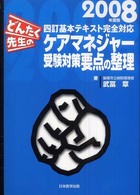Full Description
This book constitutes the proceedings of a NATO Advanced Research Workshop held at Chateau de Bonas (France) from 10-15 July 1990 on the Midbrain Periaqueductal Gray Matter (PAG). The aim of this meeting was to review and integrate our knowledge about the functional, anatomical and neuro chemical organization of the PAG. The PAG has been the subject of many investi gations during the last decade usually on different topics (e.g., pain modulation, defensive and sexual behavior) and generally there has been little interchange between the different research areas. The main purpose of this meeting was to bring together, for the first time, scientists who have worked on the PAG from different perspectives. This book does not pretend to present an exhaustive review of the data collected during the last 20 years of research on the PAG. The contributors to this book have been selected because their data provide key elements in the search to understand both the organization of the PAG and the role of this structure in the integration of behavior. We believe that this book will provide clues that will assist in unraveling the organization of the PAG in the coming years.
Contents
Introduction: Emerging Principles of Organization of the Midbrain Periaqueductal Gray Matter.- I: Functional Aspects.- Neurochemical Study of PAG Control of Vocal Behavior.- Activity of PAG Neurons During Conditioned Vocalization in the Macaque Monkey.- Discharge Relationships of Periaqueductal Gray Neurons to Cardiac and Respiratory Patterning During Sleep and Waking States.- What is the Role of the Midbrain Periaqueductal Gray in Respiration and Vocalization? (commentary).- Functional Organization of PAG Neurons Controlling Regional Vascular Beds.- Interactions Between Descending Pathways from the Dorsal and Ventrolateral Periaqueductal Gray Matter in the Rat.- Analgesia Produced by Stimulation of the Periaqueductal Gray Matter: True Antinoceptive Effects Versus Stress Effects.- Differences in Antinociception Evoked from Dorsal and Ventral Regions of the Caudal Periaqueductal Gray Matter (commentary).- The Midbrain Periaqueductal Gray as a Coordinator of Action in Response to Fear and Anxiety.- Midbrain Periaqueductal Gray Control of Defensive Behavior in the Cat and the Rat.- Does the PAG Learn about Emergencies from the Superior Colliculus ? (commentary).- Midbrain PAG Control of Female Reproductive Behavior: In Vitro Electrophysiological Characterization of Actions of Lordosis-Relevant Substances.- II: Anatomical and Neurochemical Aspects.- Descending Pathways from the Periaqueductal Gray and Adjacent Areas.- Induction of the Proto-Oncogene c-fos as a Cellular Marker of Brainstem Neurons Activated from the PAG.- The Nociceptive Modulatory Effects of Periaqueductal Gray Activation are Mediated by Two Neuronal Classes in the Rostral Ventromedial Medulla.- Localization of Putative Amino Acid Transmitters in the PAG and their Relationship to the PAG-Raphe Magnus Pathway.- GABAergic Neuronal Circuitry in the Periaqueductal Gray Matter.- Organization of Spinal and Trigeminal Input to the PAG.- Somatosensory Input to the Periaqueductal Gray: A Spinal Relay to a Descending Control Center.- Hypothalamic Projections to the PAG in the Rat: Topographical, Immuno-Electronmicroscopical and Functional Aspects.- Topographical Specificity of Forebrain Inputs to the Midbrain Periaqueductal Gray: Evidence for Discrete Longitudinally Organized Input Columns.- Regional Subdivisions in the Midbrain Periaqueductal Gray of the Cat Revealed by In Vitro Receptor Autoradiography.- Participants.








